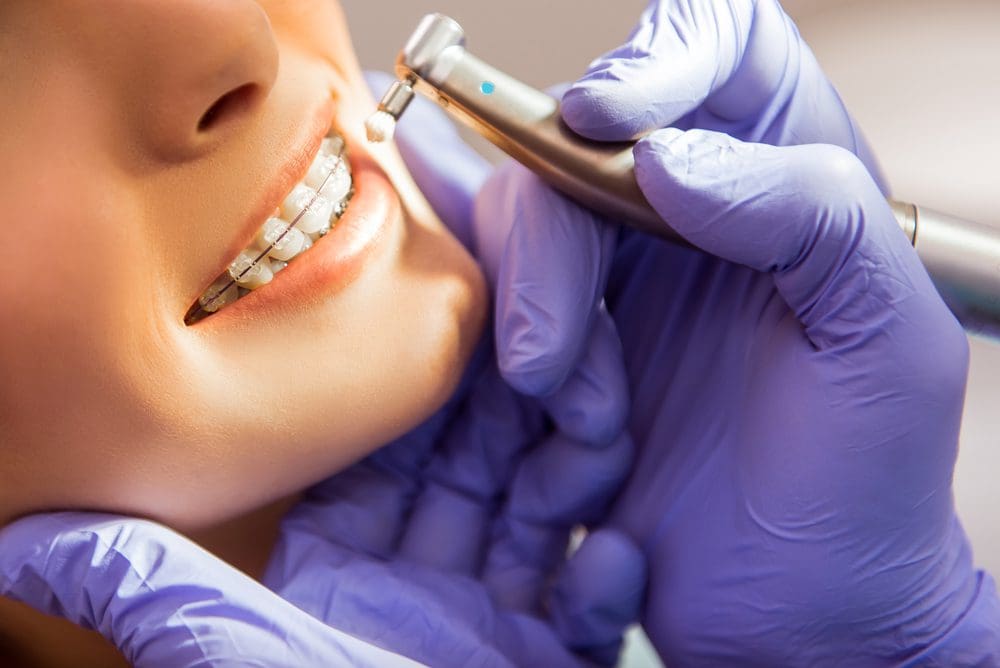Comprehensive Guide to Orthodontics Treatments for Fixing Dental Imbalances
Recognizing the details of each procedure, including their mechanisms, benefits, and possible downsides, is critical in making notified decisions about one's orthodontic treatment. As we browse via the detailed guide to orthodontic procedures for dealing with dental misalignments, the intricate information of each technique will unravel, losing light on the course towards a harmonious and functional dental placement.
Orthodontic Procedures Review

Along with conventional dental braces and clear aligners, orthodontists might likewise recommend other treatments like headgear, palatal expanders, or retainers to attend to specific placement problems (cumming orthodontics). These procedures are tailored per patient's special requirements and might include a mix of therapies to attain the wanted outcomes. Normal modifications and surveillance are essential components of orthodontic therapy to make sure progress gets on track and to make any needed alterations in the process. By undergoing orthodontic treatments, patients can not only accomplish a straighter grin yet additionally improve their overall dental wellness and feature.
Typical Dental Braces: Just How They Function
When taking into consideration orthodontic therapies for dental imbalances, conventional dental braces attract attention as a reliable technique for dealing with teeth positioning. Typical braces contain brackets, wires, and bands that work with each other to apply continual pressure on the teeth, progressively moving them right into the preferred alignment. The brackets are connected to the teeth utilizing an unique adhesive, and the wires are threaded via the braces. By changing the stress of the cables, orthodontists can regulate the direction and pressure related to each tooth, directing them right into proper positioning over time.
One secret facet of how conventional dental braces work is the process of bone remodeling. As pressure is put on the teeth with the dental braces, the bone bordering the teeth is improved to support the new tooth settings. This makeover is important for the long-lasting security of the dealt with positioning. Individuals will certainly require normal adjustments at the orthodontist's office to make sure the dental braces remain to use the proper stress for reliable teeth activity.
Invisible Aligners: Pros and Cons
These clear, custom-made trays are virtually invisible when put on, making them an attractive option for people seeking a much more aesthetically pleasing orthodontic treatment. Patients can eliminate the aligners before consuming or cleaning their teeth, minimizing the risk of food obtaining stuck in the appliance and streamlining the cleaning process.

Surgical Orthodontic Options
Surgical interventions in orthodontics present practical choices for dealing with complicated dental misalignments that may not be efficiently fixed with traditional orthodontic treatments. While unnoticeable aligners and conventional braces can correct many orthodontic concerns, particular instances call for surgical intervention to achieve optimum outcomes. Surgical orthodontic alternatives are commonly suggested for serious malocclusions, considerable jaw discrepancies, and instances where the underlying best dental office bone framework needs modification to achieve correct alignment.
One typical surgical orthodontic treatment is orthognathic surgical treatment, which includes repositioning the jaws to remedy practical issues such as trouble speaking or chewing. This surgery is typically carried out in cooperation with an orthodontist that assists straighten the teeth prior to and after the procedure. Surgical orthodontics might also entail treatments to reveal impacted teeth, get rid of excess periodontal cells, or reshape the jawbone to create an extra harmonious facial profile.
Prior to thinking about surgical orthodontic choices, patients undertake an extensive analysis to figure out the need and prospective benefits of such interventions. cumming orthodontist. While surgery may seem difficult, it can significantly improve both the feature and visual appeals of the smile in situations where standard orthodontic therapies fail
Retainers and Post-Treatment Treatment

Failure to conform with post-treatment care directions can result in regression, where the teeth progressively move back towards their original placements. Constant retainer wear, excellent dental health, and normal dental exams are vital for preserving the results accomplished through orthodontic surgery and making sure the lasting stability of the fixed oral alignment.
Final Thought
In conclusion, orthodontic procedures supply numerous alternatives for remedying oral imbalances. Surgical orthodontic choices are offered for more extreme misalignments. On the whole, orthodontic treatments can efficiently improve oral wellness and aesthetic look.
As we browse through the thorough overview to orthodontic procedures for remedying oral misalignments, the complex information of each method will certainly unravel, shedding light on the path towards a useful and unified dental positioning. - cumming orthodontist
One of the most usual orthodontic treatments is the use of braces, which consist of metal braces and cords that use mild pressure to gradually move teeth get redirected here right into the desired position.When thinking about orthodontic therapies for oral imbalances, typical braces stand out as a time-tested technique for dealing with teeth positioning. Additionally, unnoticeable aligners may not be appropriate for complicated orthodontic problems that need even more considerable teeth activity, as they are typically recommended for mild to moderate cases. Retainers are customized orthodontic devices developed to hold teeth in their fixed settings after the conclusion of orthodontic therapy.